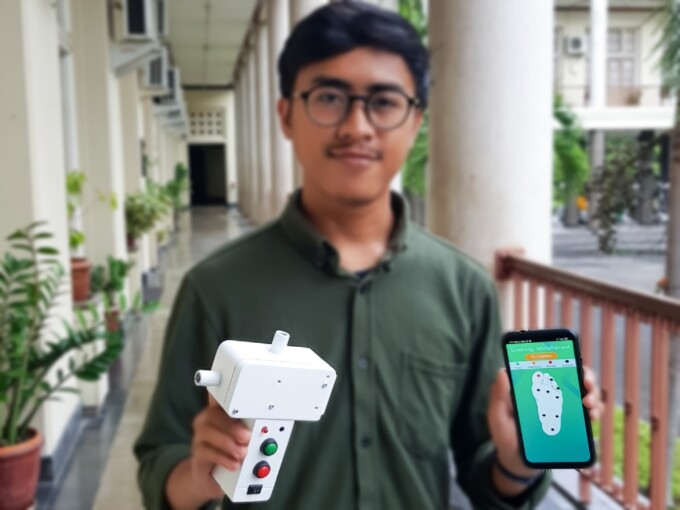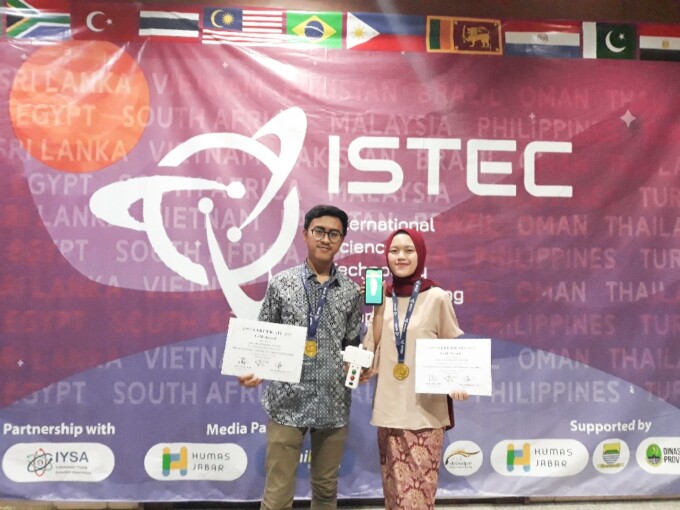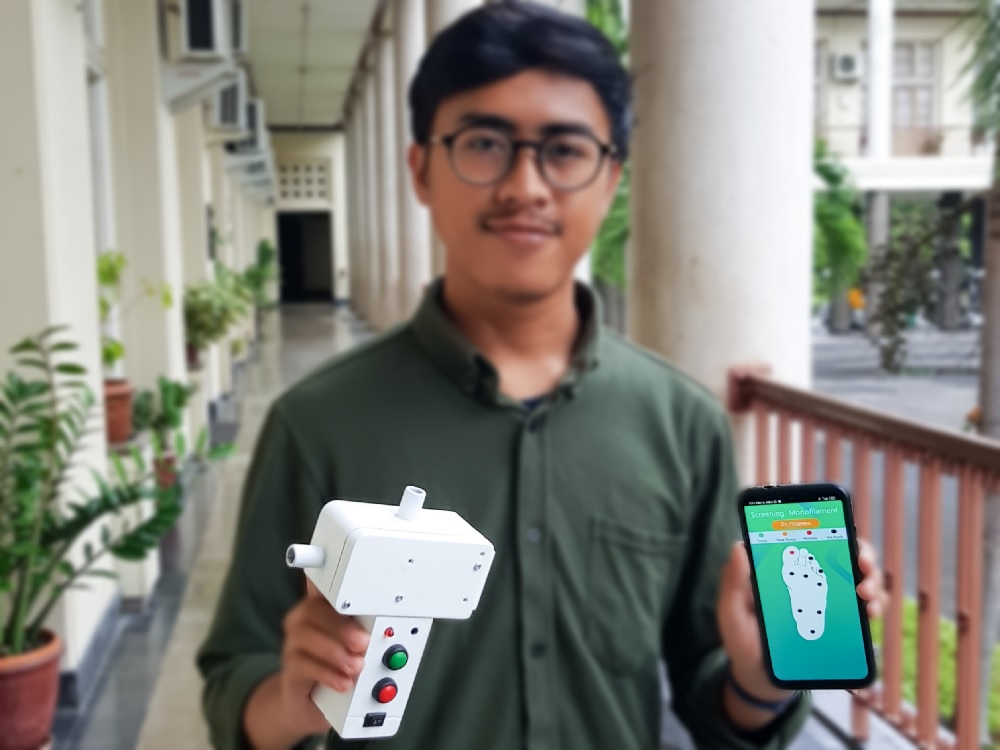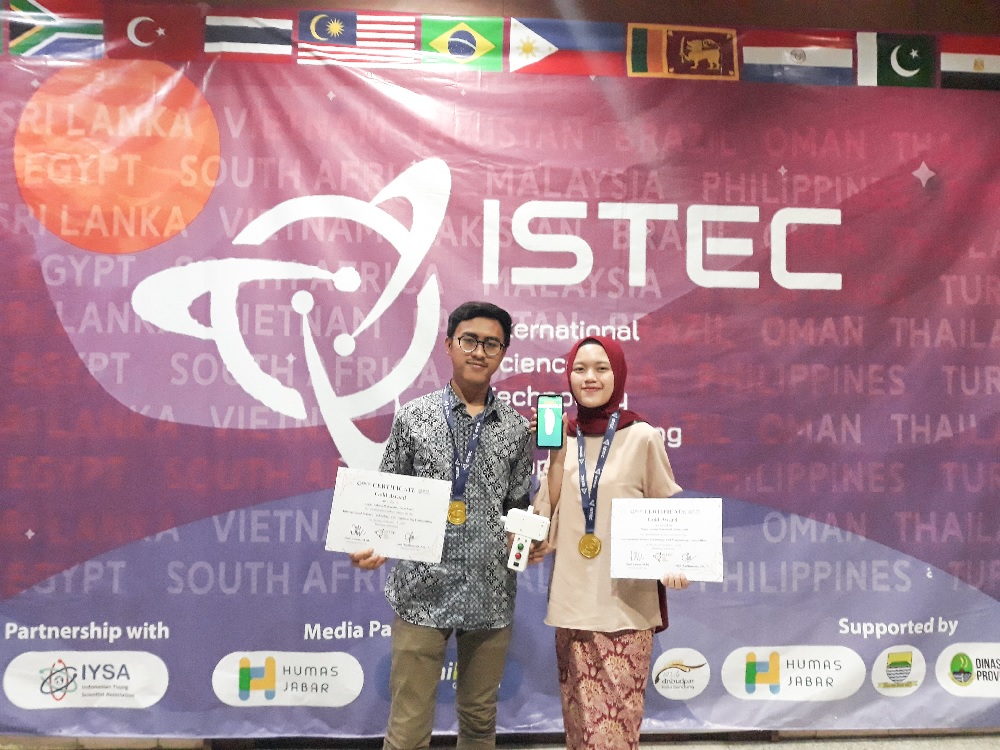UGM Student Team won a gold medal from the International Science Technology and Engineering Competition (ISTEC) 2020 which was held January 13-15 2020 at Graha Manggala Siliwangi, Bandung.
ISTEC is an international competition in science, technology and engineering, participated by 338 participants which divided into 174 teams from 14 countries. In the competition organized by the Bandung Creative Society in collaboration with the Indonesian Young Scientist Association, the UGM team consisting of Regita Rahma Maharatri (Nursing Sciences FK-KMKK) and Ilham Fazri (Elins FMIPA) successfully won gold medals from the technology category.
“We propose an innovation in the form of a Smart Portable Peripheral Neuropathy Diabeticum Screening Tool or Spherotec,” Regita said when she is contacted on Monday (1/27).
Regita said Spherotec is a prototype of a portable device composed of various sensors and connected to a smart phone. The main function of this tool serves to early detection of peripheral neuropathy in people with diabetes mellitus. Furthermore, the risk level will be classified from 0-3 according to International Diabetes Federation (IDF) data.
She explained the idea of developing this device originated from anxiety of the high number of diabetics, and even continues to increase every year. IDF data records that there are currently 463 million people living with diabetes and it is predicted that the number will continue increasing to 51 percent by 2045.
“Diabetic Peripheral Neuropathy is the most common complication in diabetics. If there is no early examination, this peripheral neuropathy will develop into a foot ulcer and can lead to lower extremity amputation,” she explained.
Through this tool, Regita hopes that it can become an alternative solution in preventing diabetic foot ulcers that can lead to amputation. This device is equipped with educational features according to the risks detected. Therefore, Spherotec can help to prevent more risks, so that it is expected to be able to increase awareness and maintain the quality of life of diabetic patients.
“Hopefully, this tool can be examined early and easily. In addition, patients can increase their awareness so that the amputation can be prevented in addition to control blood sugar and good foot care,” she concluded. (Humas UGM/Sasa)






